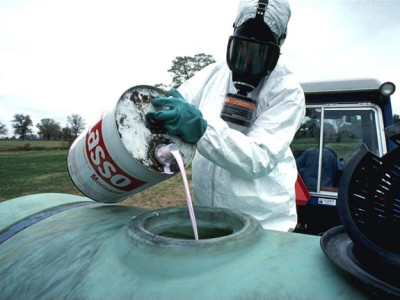Toxic Substances
2016: The Good, the Bad, and the Ugly
“But except for that, how did you like the play, Mrs. Lincoln?” It’s an old joke, for all I know going back to 1865. That was 2016,too, in a way. Like Mrs. Lincoln’s evening at Ford’s Theater, 2016 contained a lot of good things, some bad things, and then disaster. Here’s a list of each. The …
Continue reading “2016: The Good, the Bad, and the Ugly”
CONTINUE READINGSearching for Votes in the Senate
Q: Can the Dems scrounge up the votes to block anti-environment actions? A: Maybe.
Paul Ryan and Donald Trump have vowed to roll back many environmental protections. The Senate seems to be the one barrier against anti-environmental moves by Congress. How strong is that barrier? The answer depends in part on whether the filibuster option remains open. If the filibuster rule remains intact, the Democrats’ 48 votes in the Senate …
Continue reading “Searching for Votes in the Senate”
CONTINUE READINGTSCA Update: EPA Selects First 10 Chemicals for Risk Evaluation
Asbestos included in first 10 chemicals EPA will evaluate for human and environmental risks under TSCA
Today EPA released a list of the first ten chemicals it will evaluate for risks to human health and the environment under the reformed Toxic Substances Control Act (TSCA). These ten chemicals, drawn from a list of 90 in EPA’s 2014 TSCA Work Plan, will undergo complete risk evaluations within three years. If EPA finds …
Continue reading “TSCA Update: EPA Selects First 10 Chemicals for Risk Evaluation”
CONTINUE READINGWill EPA Finally Ban Asbestos?
A look at the risks the substance presents, efforts to ban its continued use in the United States, and the role of TSCA reforms
Today millions of people will tune in to watch the first 2016 Presidential Debate. I’m popping the popcorn for what promises to be quite the spectacle! But while the debate takes center stage, other events make today significant as well. Most important for me, September 26th marks the 12th annual Mesothelioma Awareness Day in the …
Continue reading “Will EPA Finally Ban Asbestos?”
CONTINUE READINGRisk Subsidies and the Future of Nuclear Power in the U.S.
Should We Take Into Account Government Subsidies that Reduce the Risks Borne by the Nuclear Industry as We Consider Our Energy Future?
As I’ve written about before, U.S. law massively subsidizes the nuclear power industry. In particular, a law called the Price-Anderson Nuclear Industries Indemnity Act dramatically skews the incentives to develop nuclear plants, and to site them in places where there is a lot of risk, because it requires the public to bear much of the …
Continue reading “Risk Subsidies and the Future of Nuclear Power in the U.S.”
CONTINUE READINGPublic Prosecutors Zero In on SoCal Gas, Porter Ranch Disaster
California Attorney General, L.A. District Attorney File New Enforcement Prosecutions
The massive leak from Southern California Gas Company’s Aliso Canyon natural gas field in northwestern Los Angeles County was discovered on October 23rd of last year and, more than three months later, shows no sign of abating. Public prosecutors have pretty clearly lost patience with SoCal gas and its ineffective remediation efforts to date. This …
Continue reading “Public Prosecutors Zero In on SoCal Gas, Porter Ranch Disaster”
CONTINUE READINGThe Flint Lead Crisis
Three Interesting Notes About Lead Regulation and Exposure
At this point, you would need to be a hermit to have missed the news coverage of elevated levels of lead in the drinking water in Flint, MI. (Although even that might not be a valid excuse given an ancient, anonymous Roman hermit described lead poisoning). The short version is: in April 2014 a cash …
Continue reading “The Flint Lead Crisis”
CONTINUE READINGNewsflash: Senate Passes TSCA Reform
A New Chapter In the Effort To Reform Federal Chemical Regulation For the First Time in 40 Years
In a striking turn of events, last night the Senate passed a newly revised version of the Frank R. Lautenberg Chemical Safety for the 21st Century Act, which would reform the Toxic Substances Control Act (TSCA) for the first time in four decades. A summary of the bill’s provisions and analysis of the differences between …
Continue reading “Newsflash: Senate Passes TSCA Reform”
CONTINUE READINGThe Ninth Circuit Takes EPA to Task (Twice)
EPA’s pesticide registration efforts trigger forceful response
Judge McKeown of the 9th Circuit Court of Appeals recently wrote of the EPA, “Although filibustering may be a venerable tradition in the United States Senate, it is frowned upon in administrative agencies tasked with protecting human health.” Yikes. What did the EPA do to elicit such a reaction from a federal judge? The short …
Continue reading “The Ninth Circuit Takes EPA to Task (Twice)”
CONTINUE READINGDuPont Found Liable In First of 3,500 Lawsuits
Chemical Used in Teflon Linked to Numerous Health Problems, but its Use is Still Legal Under TSCA
Yesterday, a jury in the Southern District of Ohio found DuPont liable for a woman’s kidney cancer in the first of 3,500 suits the company faces. The cases all stem from DuPont’s use and disposal of perflourooctanoic acid (PFOA) or C8. The chemical is used to make Teflon, among other things, and the most recent …
Continue reading “DuPont Found Liable In First of 3,500 Lawsuits”
CONTINUE READING











